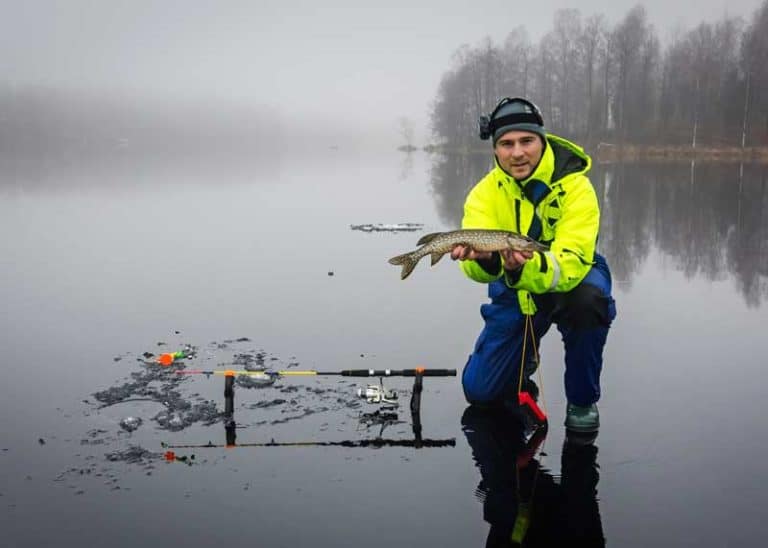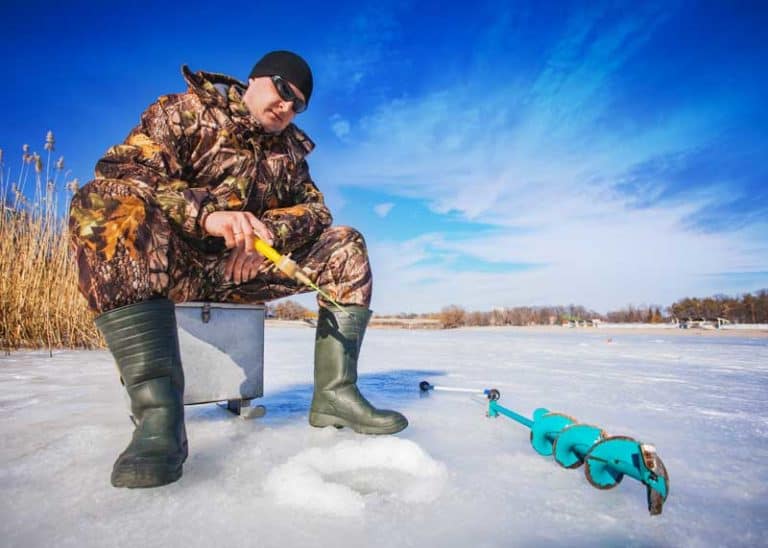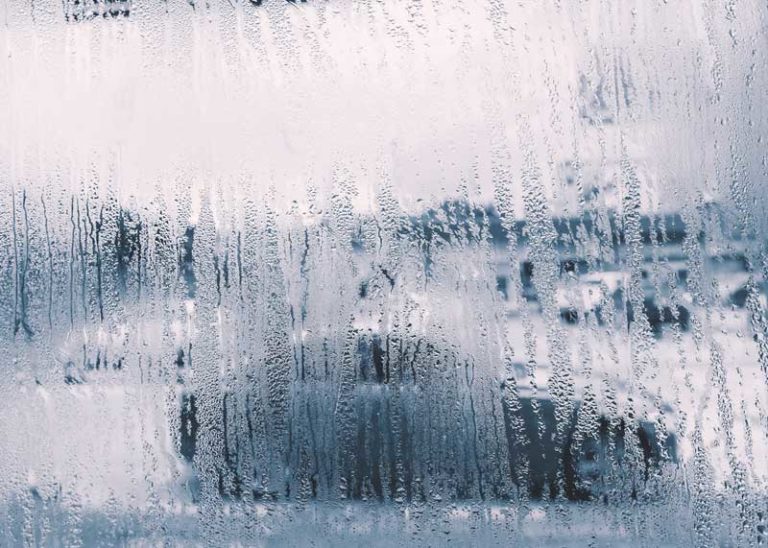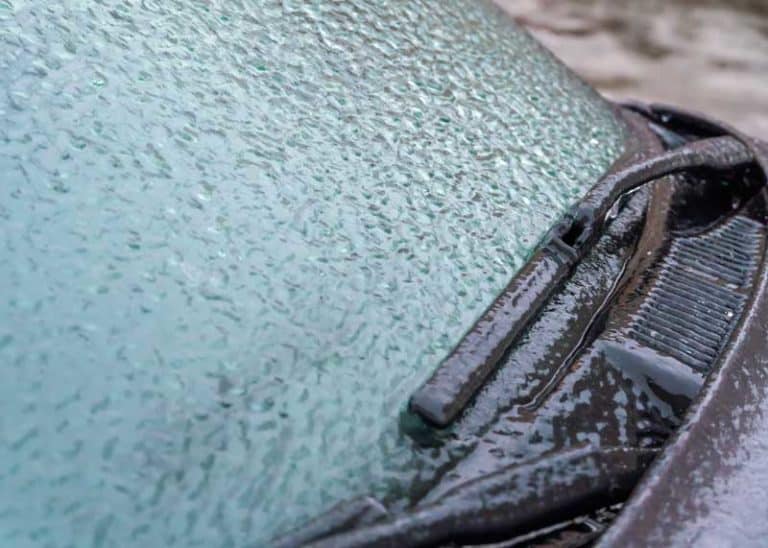How to Winterize Your RV Camper (16 Step Checklist)
A pipe bursting from freezing temperatures is one of the quickest ways to total your RV and permanently ruin your camping trips. It’s important to winterize your camper if you’re parking it in a location that gets below freezing in the winter. If you skip this step, your RV is at risk for major damage and costly repairs.
To winterize your RV, you need to drain the water tanks and plumbing lines. All water must be removed from the camper plumbing system. Then, you must pump antifreeze into the water system to prevent freezing, cracking, and further damage from colder temperatures.
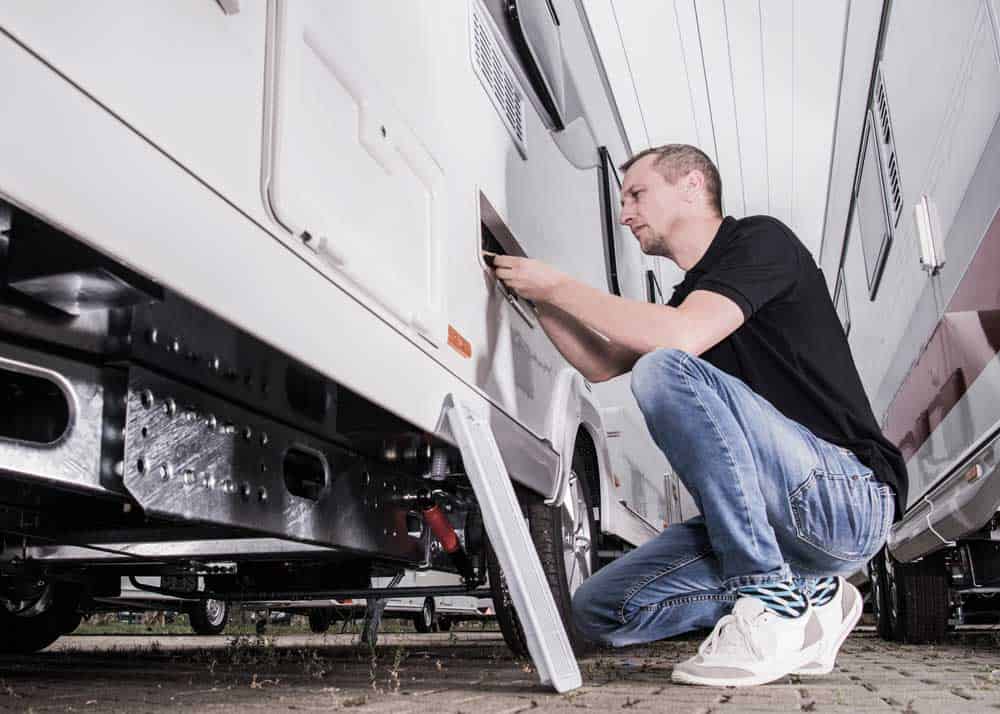
Guide to Winterize Your RV Camper
Here, we’ll review the basic steps for winterizing your RV Camper. We’ll help you choose the proper tools for the job and walk you through the process.
Ensuring your RV is ready for cold weather is essential, so we’re here to help.
Why Winterizing Your RV Matters
In colder weather, you may winterize your homes and vehicles. This process prevents water pipes and lines from freezing and bursting, leading to extreme water damage. Cold weather can damage your vehicle’s battery.
Your RV is both a home and a vehicle, so of course, it also needs to be winterized. If you don’t take these steps, your RV may sustain broken pipes, extensive water damage, and numerous other issues.
Essentially, it’s important to winterize your RV now to avoid paying for expensive repairs later. Even with some of the specialized tools that you’ll need to perform the winterization, it’s much less expensive to winterize than it is to repair the damage that can result if you don’t.
Required Supplies for Camper Winterization
The winterization process is simple, but it does require some tools that you may not have. Here are the supplies you’ll need to winterize your RV Camper.
- Basic hand tools (for drain plug removal, bypass installation, and more)
Non-toxic RV or marine antifreeze (2-3 gallons should work, but it depends on your RV)
- A cleaning wand (for cleaning out holding tanks)
- A water heater bypass kit (if there isn’t one already installed in your RV)
- A water pump converter kit (alternatively, you can use tubing for the step that uses this)
To simplify things, you can also pick up a Winter Readiness Kit on Amazon. It contains hand pump, concentrated antifreeze, blow out plug, and hanging dehumidifier. This might make sense for you if you don’t have any of the gear yet.
With these tools, you will have everything you need to begin winterizing your RV.
Winterizing Your RV: 16 Step Checklist
The first thing to remember when attempting to winterize your RV Camper is that not all RVs are the same. If you have access to your owner’s manual, prioritize those instructions before relying on any outside advice.
This may seem like a lot of work, but it can potentially save you thousands in damage (and may save your RV from being completely unusable).
- Disconnect any outside water sources. Since you’ll be flushing the water system, you don’t want water entering the system as you’re working on it.
- Remove and bypass inline water filters. You’ll be putting antifreeze into your water system when we get further along in the process. This can damage water filters, so remove them or use a bypass tube in trickier areas such as sinks.
- Drain the holding tanks. We want to remove all water from the system, so you need to start with your fresh water tank. When this is empty, move on to the black and gray water holding tanks. If your RV doesn’t have a tank flushing system, you will need to get a black tank cleaning wand to remove all black waste from the tank. You can dump your water and waste at an approved RV dumping site. Make sure to lubricate your termination valves with a lubricant (such as WD-40).
- Drain your water heater. First, make sure the water heater is not hot. Turn the water heater off and allow it to cool down before you attempt to drain it. Draining a water heater while the water inside is under pressure can lead to serious injury. Once the heater is off and has had time to cool off, you can remove the drain plug and open the pressure release valve.
- Drain your water lines. Open all of your hot and cold water faucets. Flush the toilet, open the toilet valve, and don’t forget to drain your outside shower if you have one. With these lines open, the remaining water should drain out of your water system.
- Open low point drain lines. There are two low point drain lines on your RV: one for hot water and one for cold. This can help drain the last of the water and make sure that the system is empty. You can use the water pump to remove water faster, but make sure that you turn it off as soon as the system is drained to prevent damage.
- Close all faucets and cap all drains. Once the water is completely drained from the system, close up the drain lines again. Turn off all faucets, close all the valves, and make sure that drains are recapped.
Bypass the water heater. Some RVs will already have a water heater bypass installed. If that’s the case, you can skip this step. You need to do this to make sure that your water heater doesn’t fill up with antifreeze. Not only will this waste antifreeze, but it can damage the water heater as well.
Install your water pump converter kit. This will help you introduce antifreeze into your water system for the winter. Alternatively, you can disconnect the inlet side of the water pump and connect tubing instead. Put the other end of the tubing into the container holding your antifreeze.
- Turn on the water pump. Once the antifreeze container is attached in either of the above ways, turn your water pump on. This pumps antifreeze into your water system and pressurizes the system so it can work properly.
- Turn on faucets. Start with the faucet closest to the water pump. Slowly turn on the hot water valve until antifreeze appears, then do the same with the cold. Work your way through the RV, opening each faucet slowly. Don’t forget the outside shower, if you have one.
- Flush the toilet until you see antifreeze. This flushes antifreeze into the holding tanks and makes sure that all the lines are getting antifreeze. Replace the antifreeze container with a new one when it runs out.
- Turn off the water pump. Once you’ve opened all the faucets and seen them produce antifreeze, you can turn off the water pump. Go outside to your RV’s city water inlet and remove the screen. Press the valve in until you see antifreeze seeping out, and then replace the screen.
- Add more antifreeze. You should now take about a cup of antifreeze and pour it down each of the drains in your RV. Pour a few cups into the toilet and flush it, again flushing the antifreeze into the holding tank to ensure it doesn’t freeze and crack.
- Re-check the water heater. You should make sure that the electric heating element on your water heater is turned off. Double-check this if you think it’s already off because having it plugged in while the RV is parked can damage the water heater.
- Close all the faucets. Make sure that all of your faucets and valves are in the “off” position and there are no drips or open flow points.
Don’t forget to seal your RV roof before winter. Many RV owners use Flex Seal Liquid to waterproof their RV roofs. Here’s more about how long Flex Seal lasts. And here’s how to remove Flex Seal from 6 different surfaces.
If your pipes freeze, here’s how to thaw frozen RV pipes.
Leave Faucets Open or Closed When Winterizing?
Should the faucets be closed in a winterized RV? Yes, this is considered best practice. RVers love to debate this, but most say to leave them closed.
If you follow our checklist above, you will remove virtually all the water in the lines. What little might remain, is protected by the added antifreeze. There is little chance of that remaining water freezing and causing any issue.
Regardless of your open/closed opinion, outside (low point) taps that might drain because of gravity must be closed or else you’ll lose your antifreeze. While it isn’t required for shower heads and sink taps, it’s still recommended to close these taps.
Remember, there is no pressure on the system, so you won’t lose your antifreeze while sitting over the winter. But because of cold expansion, some campers prefer to keep them open so expanded antifreeze won’t put pressure on the plumbing.
A word of caution: Make sure you close them in the spring. Or else you’ll flood your trailer when you reconnect water to your camper.
More reading: Should you keep your RV hot water heater on all the time?
Further Considerations
Keep in mind that this is just the process for winterizing the RV’s internal components. You’ll still need to make sure that any food is removed, standing water is eliminated from appliances, and that insects and rodents won’t find ways to nest in your RV while it’s parked.
Moisture control agents such as DampRid can help stop mildew from forming inside the RV while it isn’t in use.
Poison can seem like a good way to get rid of rodents, but a deterrent (like Rodent Defense spray) is preferred. When poisoned, rodents may die inside the RV, leading to a terrible smell when springtime comes around again.
You may also want to consider protecting the outside of your RV with a cover, bumper guards, or tire protection.
More reading: 6 Must-Have Gadgets for Full-Time RVers and How to sanitize your RV fresh water tank
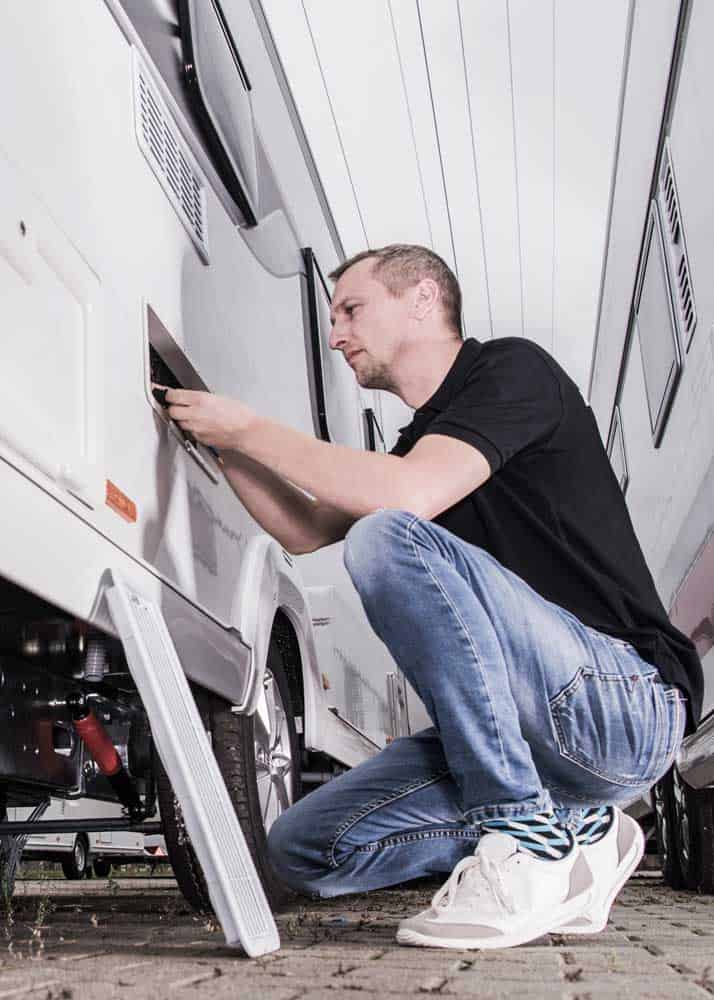
In the spring, you’ll need this guide: How to Dewinterize Your RV (17 Steps)
Winterize Your RV With Confidence
Winterizing your RV can be expensive, but it is the best way to prevent lasting damage. When your RV is parked for the winter, there are several measures you’ll need to take to protect it. This process can help you get back to adventuring in the spring without any costly surprises.
Have a tip to share? Join me in the comments!





